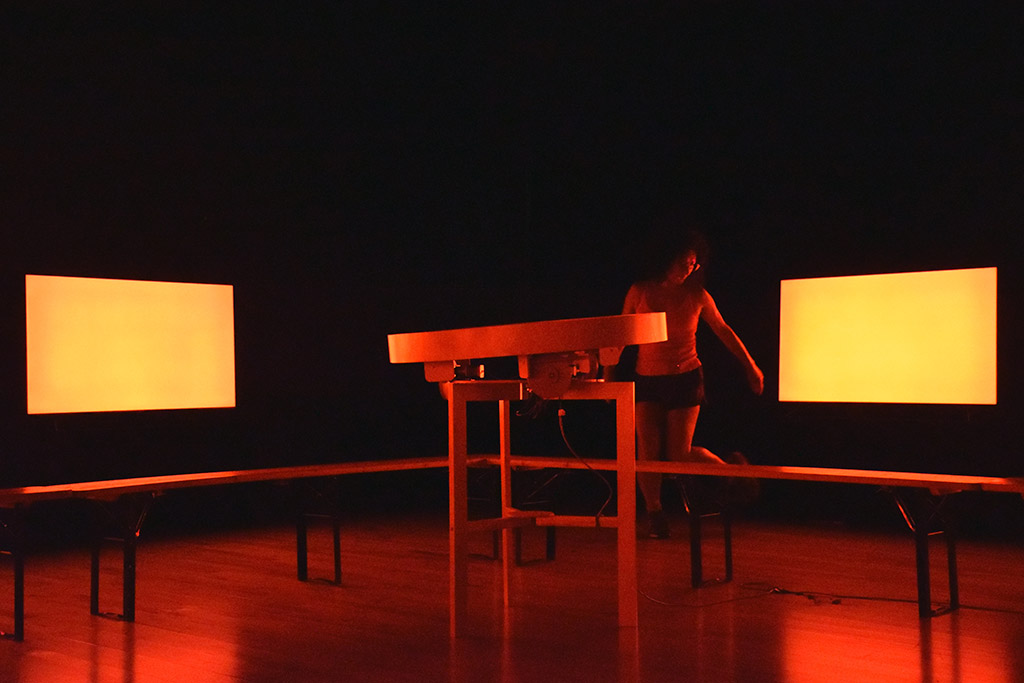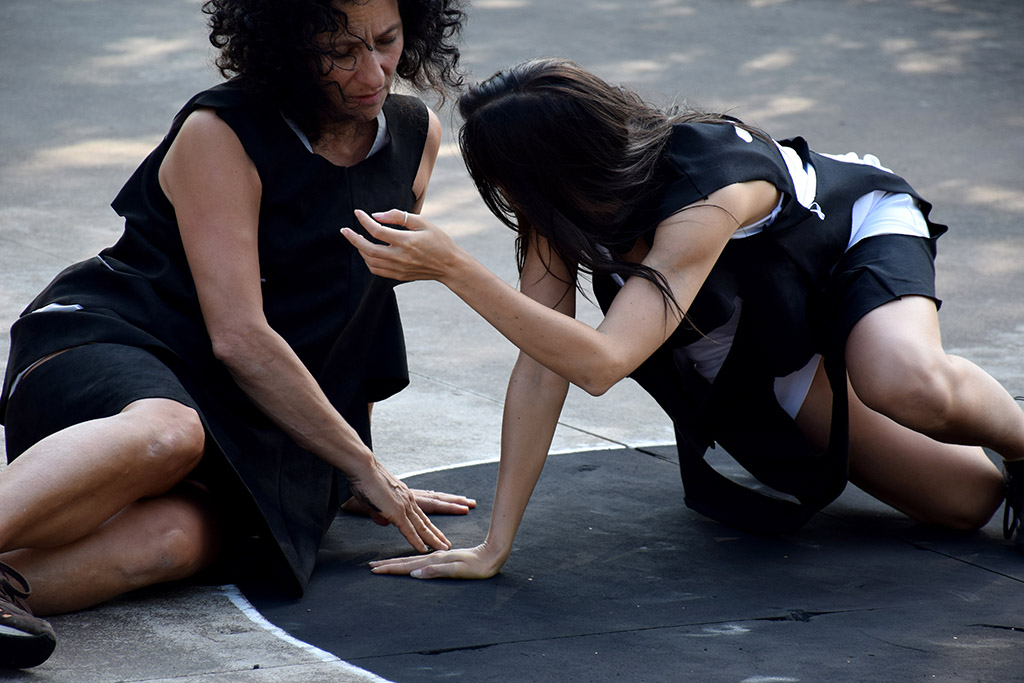Artist Q&A with Sara Gebran – about Mediating Nature
This piece references an indigenous practice of asking permission from nature. What is your connection to nature in the context of this piece?
When I was 19 years old, I had the incredible opportunity to spend 17 days in the middle of the Venezuelan Amazon Rainforest and experience the way the Piaroa indigenous community lives and acts concerning nature. I was part of a group of students from my University who set out to visit a 1200-meter Tepui rock called ‘Autana‘ or the ‘Tree of Life.’
We navigated two full days through meandering rivers until we arrived at the furthest reaches of the Piaroa community to ask them permission to visit the Tepuis. PLikewise, the Piaroa too asked nature for permission, as was their custom to do before hunting or fishing. Back then, no one was allowed to visit the Tepuis, or temple, before asking the Piaroa for permission.
On the 3rd day, we travelled with a man from the community and his 17-year-old son. A full 9-hour day further navigating the rainforest in a wooden boat, followed by 12 more days camping, and living, in the forest was already a full experience. However, I was inspired by how the father and son spoke with each other without sound, how they read the river, how they knew the forest, and how they lived in it and acted within its limits.
I developed the practice of “Mediating Nature”, not as a replica of the practice of the Piaroa community. It’s my memory of them – how they acted in nature, with such humble manners, and incredible knowledge of it, and their quietness, or maybe it was the listening attitude, through the day, which I now understand, a listening for tuning with the environment. Asking nature for permission requires us to believe nature can hear us, and can answer us if we listen to it. It also implies nature has a consciousness, as everything that exists in the world does. What we need then, is to practice how to communicate with that world and to believe we are all interconnected.
Tell me a story about how you began to develop the concept around this work.
Since 2016 I have been teaching “Mediating Nature” practice to students of architecture, dance, visual art and literature, in both Copenhagen and Stockholm. Each time, I adapt a week-long workshop and practice to the current weather and the students in question, but always with the same goal: to teach a process of asking nature for permission.
For Mediating Nature, I have adapted the practice for a participatory audience, rather than a workshop for students, as well as made it more flexible to the variable climate of late summer – facilitating raincoats for rain or stormy conditions.
In May 2022, I heard how a group of the ruling government of Venezuela descended with helicopters on top of the most important Tepuy of Venezuela El Roraima, full of species that existed there for thousands of years, that don’t exist anywhere else in the world, now cleaned away for this private party… Back then, I applied for funding to Statens Kunstfond to share this practice of Mediating Nature and received its support.
A few days later, I decided to channel my frustration and grieving about the violation towards these sacred rocks into my art. The research on the law for Nature led me to the law of ecocide, by Stop Ecocide International. From that, I came up with the idea of using that law in a staged Trial, as a retroactive application – since the real law is not retroactive – so no one runs away with it. I came up also with many other fictional ideas for how to denounce and save the world’s forests.
I had way too many ideas, so, I divided the project into 4 years, to go step by step, and invite people along with me to do it together. The perspective of this project is a 30 years plan, creating an online platform for the denunciation and protection of the world’s forests.
My practice of listening to things comes from an early age, I began knowing what was happening to others before talking to them, at whatever distance on the planet. The experience with the Piaroas community confirmed that. Now I am sharing it with you.
 The piece starts in the Black Box with digital objects, which is a more urban form of “environment” or nature. Can you explain your reasoning for starting the piece in this environment?
The piece starts in the Black Box with digital objects, which is a more urban form of “environment” or nature. Can you explain your reasoning for starting the piece in this environment?
Many people are not believers in the human capacity to sense, feel, and listen to nature. Now, if all existing things are composed of the same molecules, atoms, and protons, and everything vibrates, we should be able to listen to the vibration of all things, just like indigenous communities and other native communities do. Philosopher JanneBennett, like shamans and many scientists today confirms that, such as physicist Nassim Haramein, neuroscientist Bruce Lipton, a.o.
I am making this performance to share some of these complex thoughts with everyone. Asking the audience, for 1.30 hours, to suspend their doubts and open up to the possibility that we have this capacity to communicate through more than our five senses. I’ve designed a performance that starts in the black box, preparing both the audience and performers for the world of the unseen, the immaterial world, before we move outside to nature. Ideally, the practice of “asking permission” can not be completed just through one experience. I hope to encourage the audience to take this experience and keep on practising how to ask permission from nature, other humans, and all existing things, material or immaterial.
How to imagine the audience should experience the transition from digital experience to natural experience (from the black box to outdoor)?
Moving From the black box to outside the stage is a strong shift, from a digital setting of 10 colourful TV screens, a soundscape by Geourge’s Nature Symphony’s machines, and the two dancers moving-reciting by the back of the audience, to the semi-natural environment bare from technologic artefacts. We are moving from a sensory world stimulating our visual and auditory senses, to travel inwards when we go outside, going deep within ourselves using other senses too, incl. ears, smell, touch, taste, intuition, and perception.
Tell me more about the relationship of this performance to the recent book that you released – “The Forests Imaginary Trial – 374 Grieving Poems!”
One of the relationships is that some of the poems within the book are recited in Mediating Nature’s performance, giving them a different life from when it is read in another space/stage as it is when readers read them on the page, as if on a stage.
Mainly, this publication is a transition, or connection, between Mediating Nature and the next chapter performance The Forests Trial. It invites the reader to participate as a judge or witness in this future stage trial to represent a list of endangered species. The Forests Trial is a fictional staged trial, designed to defend the forests of the world, to speak for the unspoken, and to ‘name’ those responsible for deforestation, beginning with two cases: the Danish forests and the Venezuelan Amazonia.
To get to know these species better, we give the book to the audiences now, so they can look them up, select who they wish to represent, and make good use of their time until we meet in the trial in a year.
There is a list of ‘grieving poems’ (translated into four languages in the book), which are connected to another vast list of endangered species all around the world. The parallels between these poems and the endangered list aim to evoke empathy, grieving, and concern for our new climate regime, fighting against the rapid disappearance of nature.
Both the book and the performances are my call to arms for people to assemble and direct our collective actions to safeguard our planet’s conditions of habitability.
Interview by Jeffrey Stratton
Photos: Tor Lindstrand



